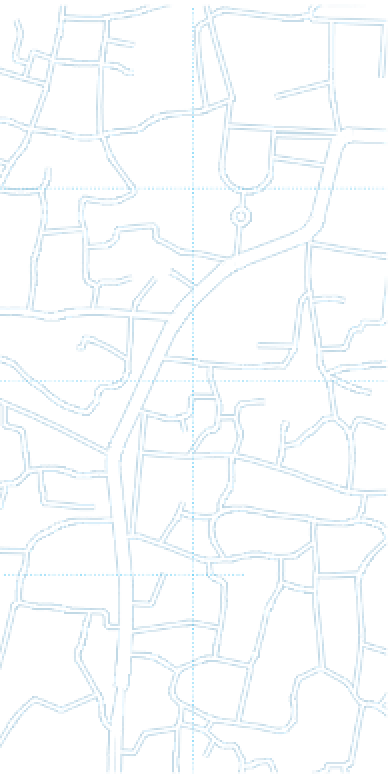Travel Reference
In-Depth Information
Shakhrisabz
e
0
200 m
Shakhrisabz
æ
Sights
1
Ak-Saray Palace.................................... B1
2
Amir Timur Museum ............................B2
3
Crypt of Timur .......................................B4
4
Dorut Tilyovat........................................A4
Gumbazi Seyidan.......................... (see 4)
5
Kok-Gumbaz Mosque ..........................A4
6
Mausoleum of Sheikh
Shamseddin Kulyal............................A4
7
Tomb of Jehangir ..................................B4
0
0.1 miles
A
B
66
ä
Post Office
(500m);
Shahrisabz Hotel
(700m)
Kitab (12km)
1
66
1
1
D
66
9
ÿ
Sleeping
8
Fayzullah Ravnakhi B&B ......................A2
ú
â
2
2
2
u
ú
Eating
9
Aquarium ...............................................B2
hi
a
ÿ
8
Hammom
Dorut¨Tilyovat¨
MAUSoLeUM
(house of Meditation)
Behind Kok-Gumbaz is
Dorut Tilyovat, the original burial complex
of Timur's forebears. Under the dome on the
left is the
Mausoleum¨of¨Sheikh¨Sham-
seddin¨Kulyal
, spiritual tutor to Timur and
his father, Amir Taragay (who might also be
buried here). The mausoleum was complet-
ed by Timur in 1374.
On the right is the ornate
Gumbazi¨Seyi-
dan
(Dome of the Seyyids), which Ulugbek
finished in 1438 as a mausoleum for his own
descendants (although it's not clear whether
any are buried in it).
Khazrati-Imam¨Complex¨
MAUSoLeUM
(hovuzi Mardon)
A walkway leads east from
Kok-Gumbaz to a few melancholy remnants
of a 3500-sq-metre mausoleum complex
called Dorussiadat or Dorussaodat (Seat of
Power and Might), which Timur finished
in 1392 and which may have overshadowed
even the Ak-Saray Palace. The main survi-
vor is the tall, crumbling
Tomb¨of¨Jehangir
,
Timur's eldest and favourite son, who died
at 22. It's also the resting place for another
son, Umar Sheikh (Timur's other sons are
with him at Gur-e-Amir in Samarkand).
In an alley behind the mausoleum (and
within the perimeter of the long-gone
Dorussiadat) is a bunker with a wooden
door leading to an underground room, the
Crypt¨of¨Timur
. The room, plain except
for Quranic quotations on the arches, is
nearly filled by a single stone casket. On
the casket are biographical inscriptions
about Timur, from which it was inferred
(when the room was discovered in 1963)
that this crypt was intended for him.
Inside are two unidentified corpses.
66
3
3
66
Bazaar
Sh
66
4
4
Khazrati-
Imam
Complex
6
5
#
æ
#
æ
Long-
Distance
(3.5km)
ß
6
#
æ
7
#
æ
3
4
›
A
B
took some 24 years to complete. Its creation
followed a successful campaign in Khorezm
and the 'import' of many of its finest arti-
sans. It's well worth climbing to the top of
the
pishtak
to truly appreciate its height and
imagine what the rest of the palace was like,
in size and glory. The arch was a staggering
22.5m wide, and collapsed 200 years ago.
A new statue of Amir Timur stands in
what was the palace centre. It's not uncom-
mon to see 10 weddings at a time posing
here for photos at weekends, creating quite
a mob scene. Ak-Saray has been a Unesco
World Heritage Site since 2000.
Kok-Gumbaz¨Mosque¨
MoSQUe
(ipak Yoli;
h
8.30am-6pm)
F
This large Fri-
day mosque was completed by Ulugbek in
1437 in honour of his father Shah Rukh (who
was Timur's son). The name, appropriately,
means 'blue dome'. The palm trees painted
on the interior walls are calling cards of its
original Indian and Iranian designers.
















































